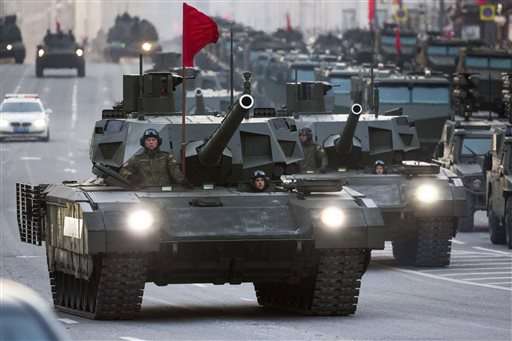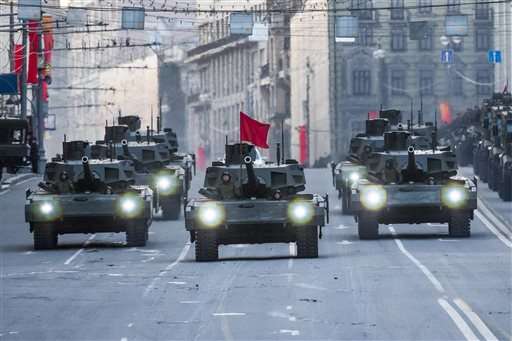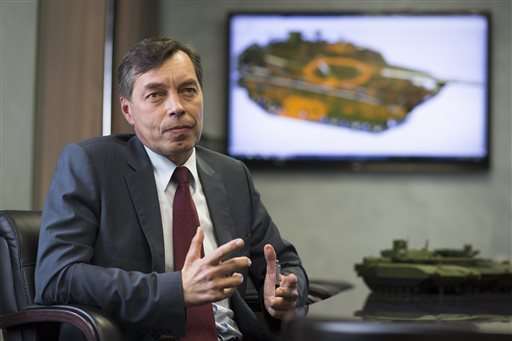Russia's new Armata tank: step toward fully robotic vehicles

Russia's new tank, the Armata, is expected to form the backbone of the nation's armed forces for years to come. Its designers say the new machine may evolve into a fully robotic vehicle that could operate autonomously on the battlefield. Here is a look at some of the key features of the new tank:
REMOTE-CONTROLLED TURRET
The Armata is groundbreaking in having a remote-controlled turret and an internal capsule for the crew that is isolated from ammunition and fuel, a layout that could significantly increase the chances for the crew survival if the tank is hit.
While previous Russian tanks featured a low silhouette and compact size at the expense of crew comfort, the Armata is significantly bigger and heavier. Designers say they put special emphasis on ergonomics, so that even very tall people feel comfortable in it. One designer said the new tank is as pleasant and easy to drive as a modern SUV.
COMPUTERIZED CONTROLS
The Armata features a digital control system that directs its movement, tracks targets and activates the tank's defense systems. It frees the crew from performing routine tasks to allow it to focus on key combat functions. "For the crew, it's like playing a video game," said Ilya Demchenko, one of the Armata's designers.
The Armata's chief designer, Andrei Terlikov, said that the new technologies built into the Armata could make it possible in the future to build a fully robotic vehicle that would operate autonomously on the battlefield.
MODULAR DESIGN
The new tank is part of a family of new armored vehicles built on a unified platform that has a structure based on replaceable modules. This helps lower production costs and leaves room for further development.
The Armata family includes a heavy armored infantry vehicle that offers the same level of protection as the tank, and various support machines.

SUPERIOR PROTECTION
The Armata uses a new type of armor, which designers say is significantly more resistant to enemy fire, although they are coy about its specific characteristics. On top of that, the vehicle is protected by an improved version of reactive armor, which explodes on impact to stop a projectile from reaching the main layer of armor.
The Armata is also equipped with a so-called active protection system, forming an outer perimeter of its defenses. When the system spots an enemy projectile, it fires a round to destroy it or knock it off its path.

SUPER CANNON
The current version of the Armata is equipped with standard-caliber 125-mm cannon, similar to those used on current tanks, which can fire both regular shells and rockets.
Designers say that a much more powerful 152-mm cannon could be easily fitted to the Armata in the future—although they say there is no need for that yet.
© 2015 The Associated Press. All rights reserved.





















